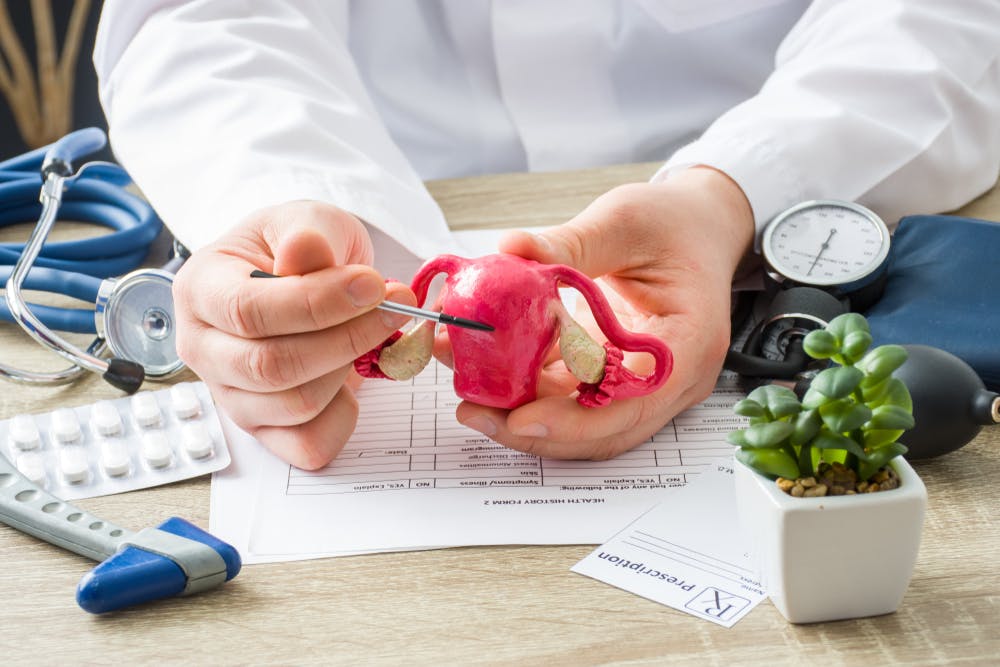Until recently, a woman with an absent or nonfunctional uterus had no hope of carrying her own children. But in 2014, a baby born in Gothenburg, Sweden following a uterine transplant marked the first such surgery in the world to result in a live birth.
Although the American Society for Reproductive Medicine (ASRM) still considers the procedure experimental, the current status of uterine transplants promises an exciting future for women with a very specific fertility challenge.
Absolute Uterine Factor Infertility
According to the ASRM, in the United States alone, between 1 and 5 percent of women have uterine anomalies that result in absolute uterine factor infertility (AUFI). These anomalies include congenital conditions like Mayer-Rokitansky-Küster-Hauser syndrome and acquired conditions like Asherman's syndrome. A hysterectomy early in life can also be a cause of AUFI.
The British Journal of Obstetrics and Gynaecology asserts that transgender women who were assigned male at birth also have AUFI. Fertility and Sterility notes that while research trials on uterine transplants in trans individuals are lacking, a trans woman who wishes to give birth to a child "does not have a lesser claim to that desire" than a cisgender (non-transgender) woman.
Historically, women with AUFI could only pursue parenthood via gestational surrogacy or adoption. Because these paths are not always viable due to financial and legal barriers, interest in uterine transplant procedures has increased in recent years. As of mid-2019, more than 30 transplants have been successfully performed worldwide and resulted in 11 live births.
Uterine Transplant Guidelines
The ASRM committee opinion on uterine transplants concludes that a transplant should only be performed in cases of absolute uterine factor infertility, within an Institutional Review Board-approved research protocol and following the evaluation of a multidisciplinary treatment team.
The committee also detailed patient inclusion and exclusion criteria. Beyond having AUFI, the recipient of a donor uterus should also be a non-smoker between 18 and 45 years old who is willing and able to undergo a psychiatric evaluation, in vitro fertilization, a high-risk pregnancy, a cesarean section and the subsequent removal of the transplanted uterus.
Unlike other organ transplants, a uterine transplant is intended to be temporary; once the patient has delivered via C-section once or twice, the organ is removed. This means that recipients must be prepared to undergo three to four surgeries minimum over a period of several years. Because the procedure is still experimental, there are no reliable statistics to predict the number or success of these surgeries.
Ethical Considerations
A uterine transplant is considered a vascularized composite allograft, along with the transplantation of other life-enhancing but nonlifesaving body parts such as the hands and face. The United Network for Organ Sharing requires consent to allow organs to be removed from a live or deceased individual.
Both recipients and living donors should be made aware of the surgical risks and experimental nature of the procedure, as well as receive appropriate counseling beforehand. Just like other organ transplants, recipients should be carefully selected following the inclusion and exclusion guidelines provided by ASRM.
Perhaps most importantly, because many living donors are family members of the recipient, they should not feel pressured to donate despite the highly emotional situation.
The Future of Uterine Transplants
Uterine transplant research continues wordwide. In the U.S., Penn Medicine is currently enrolling recipients and living donors in a uterine transplant clinical trial. Trial criteria are even stricter than what ASRM lays out; the age range is restricted from 21 to 40, and participants must undergo two years of preparation before the surgery even takes place.
Still, it's encouraging to see research advance in an area of infertility with few established solutions. While answers might not come in time for today's hopeful parents, they may arrive for the next generation.


